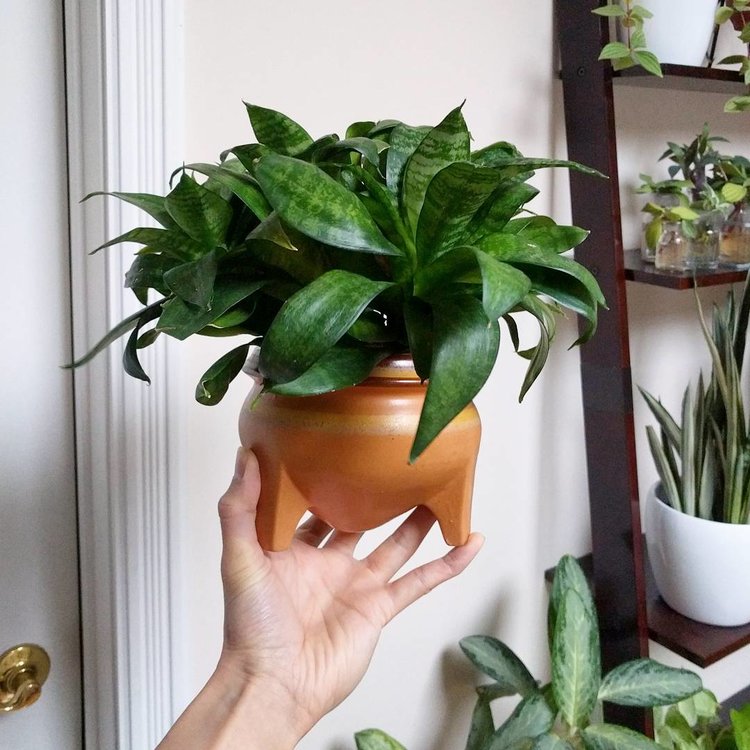I call this a vintage snake plant because I got it from an elderly lady who had received it as a propagation from her grandmother. So it is essentially a clone from the early 1900’s.







How I care for my snake plants:

Light: whether they get direct sun or just bright indirect light doesn’t really matter – they seem happy either way so if you can provide this, read the ‘Growth Strategy’. If your snake plant is sitting in a corner where it cannot see any part of the sky, then skip over to ‘Survival Strategy’.
Growth Strategy: compared to other house plants, Sansevieria are considered slow growers even with bright light so if you were hoping to get a lush snake plant from a small starter plant, you’ll be waiting a couple years. Most of the larger snake plants I have put up just 1 or 2 new leaves per year. My smaller ones appear to grow faster but it’s probably just a perception thing because the overall plant is smaller so one leaf makes a big difference. Snake plants are considered succulents – their thick leaves store lots of water – so you can wait until the soil is bone dry before watering. At my light levels (about 200 foot-candles at the brightest point of the day), I’m watering these guys once every 2 weeks – but remember, always go according to your light and potting situation; for instance, if you’re using clay pots, the soil may dry out sooner. No matter what type of pot you have, the soil will become compacted so it’s best to aerate the soil maybe every other watering but since snake plants live in almost desert environments, they are used to hard soils.
Survival Strategy: the great thing about snake plants is they will look great even when starving but the “snake plant for a dark corner” idea is probably how people started spreading the idea that overwatering is the number one killer of house plants. Death by overwatering is just a symptom of the true cause, which is not enough light to use up the excess moisture. If you must put your snake plant where it is basically not growing, then you must also keep the soil as dry as possible. Perhaps once a month, you could extend its life by giving it a good soaking and then leaving it beside a window for a day or two so it can store up some food for the next round of fasting. Hopefully after a few times, you’ll come to your senses and just leave the snake plant by the window so it can be happy!